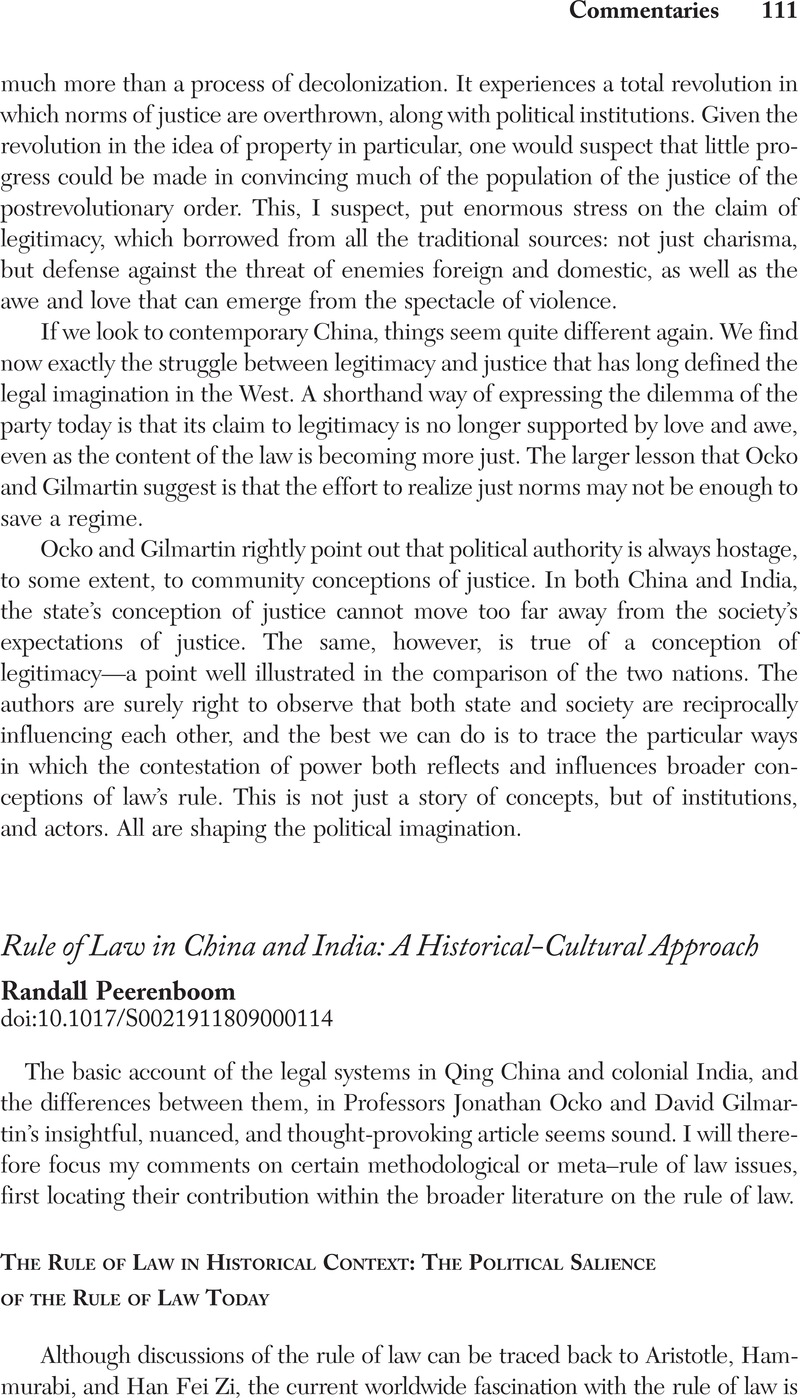Article contents
Rule of Law in China and India: A Historical-Cultural Approach
Published online by Cambridge University Press: 27 January 2009
Abstract

- Type
- Commentaries
- Information
- Copyright
- Copyright © The Association for Asian Studies, Inc. 2009
References
1 Kennedy, David, “Political Choices and Development Common Sense,” in The New Law and Economic Development: A Critical Appraisal, ed. Trubek, David and Santos, Álvaro (Cambridge: Cambridge University Press, 2006), 103–31Google Scholar.
2 See also Peerenboom, Randall, China's Long March toward Rule of Law (Cambridge: Cambridge University Press, 2002)CrossRefGoogle Scholar; and Baxi, Upendra, “Rule of Law in India: Theory and Practice,” in Asian Discourses of Rule of Law, ed. Peerenboom, Randall (New York: Routledge, 2004), 342–45Google Scholar.
3 For law as the bridge to other modes of discourse or fields, including politics and economics, see Habermas, Jürgen, Between Facts and Norms, trans. Rehg, William (Cambridge, Mass.: MIT Press, 1998)Google Scholar.
4 Peerenboom, Randall, China Modernizes: Threat to the West or Model for the Rest? (New York: Oxford University Press, 2007)Google Scholar.
- 2
- Cited by




